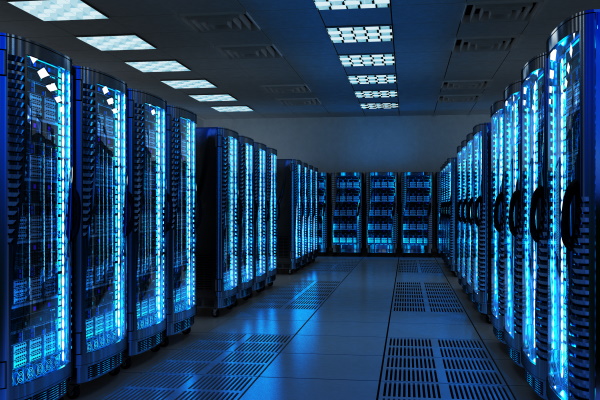Shaping the future of data centres
APAC director EU Automation John Young investigates how data centre engineers can keep pace with our data evolution.
A survey of data centres by Forbes Insights and Vertiv indicates that not all companies are prepared for our evolving data ecosystem.
ADVERTISEMENT
Just 29% of the 150 business leaders and data centre engineers surveyed say their facilities are meeting current needs, with only six per cent feeling that data centres were updated in time to meet future demands. The deluge of data that businesses rely on isn’t going to hold its floodgates any time soon, so how can we futureproof our data centres?
With the world’s data set to grow to 175 zettabytes by 2025, data centres will continue to play a central role in the ingestion, computing, storage and management of our information.
Leaner and greener
Current data centres aren’t renowned for their energy efficiency. Electricity consumption from China’s data centre industry is on track to jump by two thirds over the next five years. By 2023, the sector is projected to consume 267 terawatt hours (TWh) of electricity — more than Australia’s total 2018 electricity consumption.
Much of the energy data centres require comes from the need to keep their processors cool, which often uses ambient air-cooling with cold water-recirculation coolers. If data centres are cooled inefficiently, it can lead to high operational costs and unnecessary spending.
Adopting improved cooling methods is therefore central to securing a bright future for data centres. For example, engineers can consider water cooling methods, which typically cost less and require fewer parts, to remove heat from the computer room air handler (CRAH).
Glycol is another effective cooling option that uses a mixture of water and ethylene glycol, similar to anti-freeze for cars, to collect heat from the refrigerant and transport it away from the IT environment. Glycol pipes can run much longer distances than refrigerant lines and can service several CRAC units from one dry cooler and pump package.
Another cooling option is an indirect air evaporative cooling system. This method uses outdoor air to indirectly cool data centre air when the temperature outside the centre is lower than the temperature set point of the IT inlet air.
While this significantly improves energy savings, it may be difficult to retrofit this option onto an existing data centre. When selecting the most suitable cooling method, engineers must consider the location and current state of their centre, as well as their plans for future growth and development.
Self-care
Almost a quarter of executives surveyed for Vertiv’s report revealed that over 50% or more of their data centres will be self-configuring by 2025 — and about one third say that more than half of their data centres will be self-healing by then.
Self-configuring or self-healing devices incorporate infrastructure that allows for real-time maintenance, configuration and issue resolution, enabling an adaptable and dynamic working process.
Much like the autonomic nervous system of the human body, a self-healing computing infrastructure is capable of constantly optimising its status and automatically adapting itself to changing conditions. While self-healing systems can detect and resolve problems automatically, self-optimisation improves performance or reduces costs by, for example, routing a workload to a different cloud provider.
Inside data centres, artificial intelligence (AI) technologies such as deep learning, statistical learning and optimisation algorithms model complex components and operational models. Combined with sensing technologies and automation systems, the goal is to achieve more efficient and reliable data centre infrastructure that operates at a lower cost.
So, it could be that, by collecting data on failure rates in normal operations, self-healing infrastructure can report on failing components such as hard drives or solid state drives (SSDs), or low probability events such as battery defects. This data allows the centre’s operator to inform and prepare customers in advance of potential risks. The ability to recognise and report on current and potential failures could also alert operators to any hardware faults, allowing them to order automation parts from a reliable supplier without causing disruption to the data centre’s ordinary operations.
On the edge
Preparing our data centres for the future involves looking at the locations of the data centres, as well as at technology. To meet growing demands for data storage and management, small distributed data centres — or edge data centres — are being deployed to enable hyper-local storage and processing capacity at the edge of the network.
Edge computing technology involves placing resources closer to the origins of data — such as motors, pumps or generators — to reduce the need to transfer data back and forth between centralised computing systems, or the cloud. Edge computing is already taking the strain from data centres for a number of consumer applications. Tesla cars have onboard computers that allow for almost real-time processing for data collected by the vehicle’s dozens of peripheral sensors, providing the ability to make timely, autonomous driving decisions.
As an industry, we need far more than six per cent of data centre engineers to feel that their facilities are future proof. By looking to new approaches in cooling, configuration and location, data centre engineers can better prepare for the ever increasing flood of data the future will bring.
To find out more about EU Automation and the industrial equipment it supplies, visit www.euautomation.com.
-
ADVERTISEMENT
-
ADVERTISEMENT



